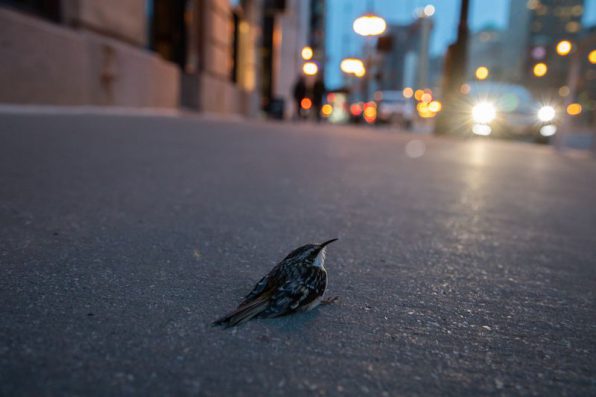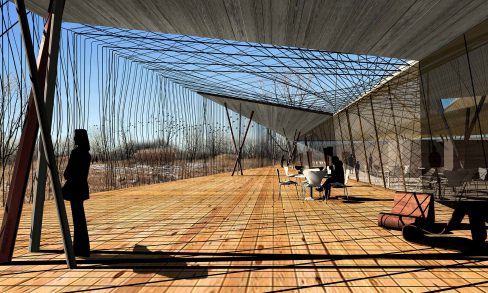Chicago Tribune — “A Safer Migration for Chicago’s Birds”
Photo by Zbigniew Bzdak / Chicago Tribune
Author
Jeanne Gang and Doug Stotz
Publication
Chicago Tribune
Year
2020
Tags
Jeanne Gang and Doug Stotz, Field Museum Senior Conservation Ecologist/Ornithologist, urge Chicago’s Department of Planning and Development to enact building codes that are more bird-friendly.
October 9, 2020
“Fall bird migration is now near its peak. Millions of birds will move through Chicago over the next few weeks. Large numbers of migrating birds flood through the center of the country from their main wintering grounds in Central America and Mexico in the spring and return south each fall. They find Chicago’s famous architecture, and our tall, sleek, window-clad buildings make for a perilous flight. Birds have enough fatal collisions with those buildings that scientists at the Cornell Laboratory of Ornithology point to Chicago as the most dangerous city in North America for migrating birds. Ornithologists know that artificial lighting at night combined with clear glass during migration creates deadly conditions for tens of thousands of birds every spring and fall in Chicago. After the Chicago City Council passed an ordinance in March, The Department of Planning and Development has the opportunity to establish new requirements to reduce bird fatalities in Chicago.
Chicago has taken steps to address the thousands of bird deaths due to window strikes by creating expanses of bird habitat away from tall buildings and by implementing the Lights Out program. City parks, forest preserves, and tree-lined streets provide invaluable greenspace, enjoyed not only by birds and pollinators, but also by people. Continuing efforts to increase the acreage and quality of greenspace improves the quality of life for people and provides essential resources for the birds that grace our city every spring and fall. Additionally, the Lights Out program, where skyscrapers opt-in to turn off decorative lighting at peak migration times, has decreased bird deaths substantially since it went into effect in 1995. Despite this program, volunteers still find thousands of dead birds throughout the city; more than 70,000 have been collected and brought to the Field Museum for study.
On March 27, Chicago’s City Council passed an ordinance to make bird-friendly design a significant part of our skyline. Ordinance O2020-136 appoints The Department of Planning and Development (DPD) to amend the Chicago Sustainable Development Policy by introducing building standards that deter bird collisions with the goal of reducing avian mortality and injury from window strikes. As the DPD’s Sustainability committee develops new guidelines they have asked for recommendations from Bird Friendly Chicago — a team with representatives from Chicago Audubon Society, Chicago Bird Collision Monitors, Chicago Ornithological Society, and Illinois Ornithological Society.
DPD could vastly reduce bird fatalities by amending building code in line with New York City’s ordinance late last year. Ordinance 1482-B requires new buildings to use bird-friendly materials that are visible to birds, on critical parts of buildings, alerting them to the presence of glass and avoiding deadly strikes. There are many strategies that can be used to reduce threats to birds, in one of the newest technologies, a pattern in the glass is visible at ultraviolet wavelengths, which can be detected by birds but doesn’t obscure the view for people. The ordinance also requires that non-essential lighting be shut off automatically at night.
Chicago has the opportunity both to deal with the dangers presented to migratory birds by building windows and at the same time improve and expand habitat for birds all over the city. By doing so, we can change Chicago from the most dangerous city for migrating birds to one of the most hospitable.”
Related
The Urban Audubon — "Studio Gang Begets Bird-Friendly Beauty on Tenth Avenue"
“NYC Audubon welcomes this beautiful new ecology-minded structure. It may serve as an inspiring example for future bird-friendly design, as it includes many features now required in all new construction in the City, thanks to new legislation recently passed by the New York City Council.”




